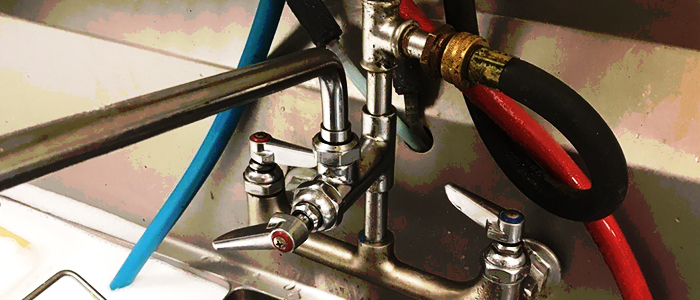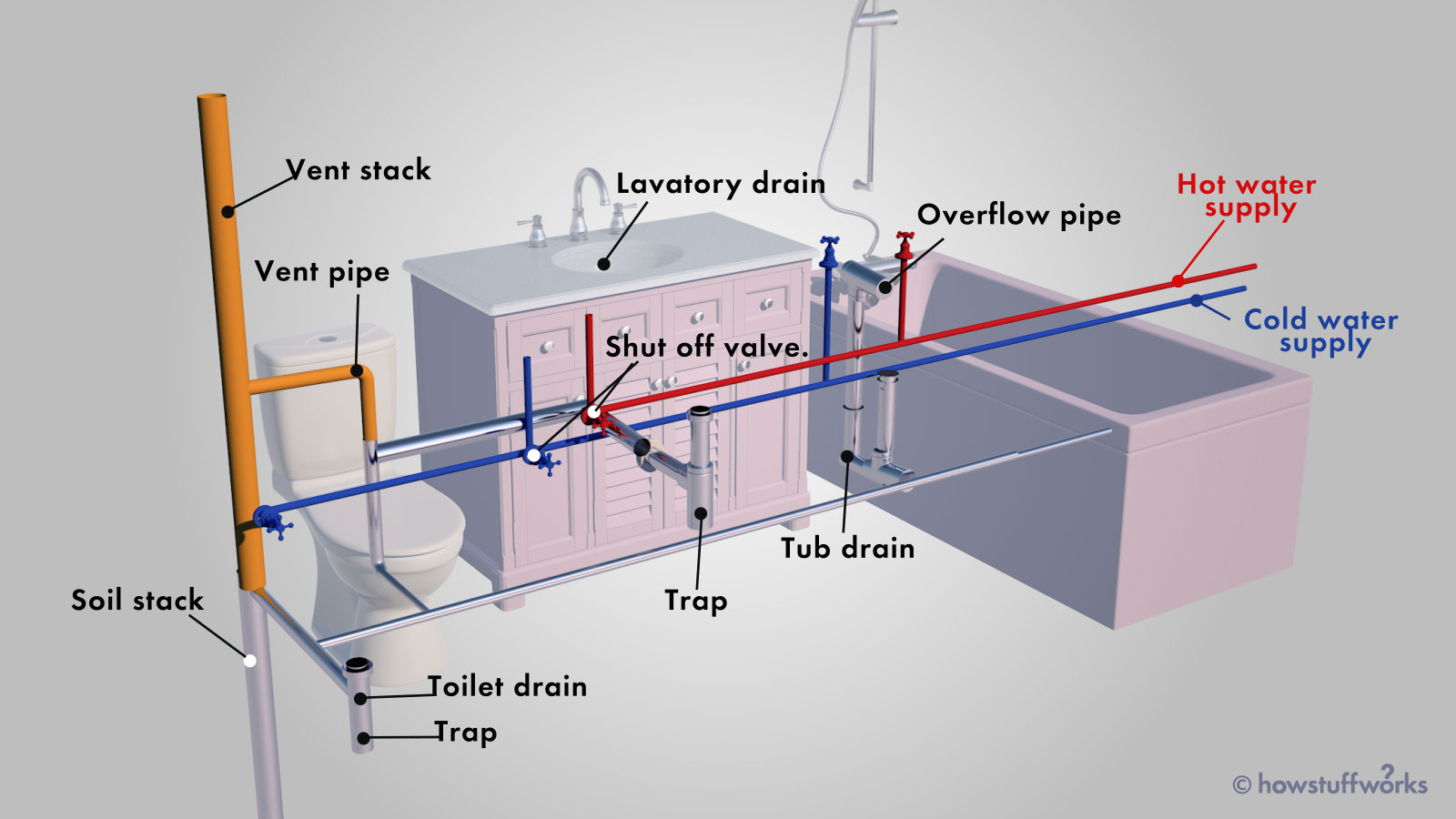A Closer Look at The Anatomy of Your House's Plumbing System
A Closer Look at The Anatomy of Your House's Plumbing System
Blog Article
The article author is making a number of great pointers related to Anatomy of a House: Understanding the Components in general in this post followed below.

Comprehending just how your home's pipes system functions is essential for each homeowner. From providing tidy water for alcohol consumption, cooking, and showering to safely eliminating wastewater, a properly maintained plumbing system is important for your family members's health and comfort. In this thorough overview, we'll explore the complex network that composes your home's pipes and offer suggestions on upkeep, upgrades, and handling typical problems.
Intro
Your home's pipes system is greater than just a network of pipes; it's a complicated system that guarantees you have accessibility to tidy water and reliable wastewater elimination. Understanding its parts and just how they work together can help you avoid costly repairs and make certain every little thing runs efficiently.
Fundamental Parts of a Pipes System
Pipelines and Tubing
At the heart of your plumbing system are the pipes and tubing that bring water throughout your home. These can be made from different materials such as copper, PVC, or PEX, each with its advantages in terms of resilience and cost-effectiveness.
Fixtures: Sinks, Toilets, Showers, etc.
Fixtures like sinks, toilets, showers, and bathtubs are where water is made use of in your house. Recognizing exactly how these fixtures connect to the plumbing system helps in diagnosing problems and intending upgrades.
Shutoffs and Shut-off Points
Valves control the flow of water in your pipes system. Shut-off shutoffs are important during emergencies or when you require to make fixings, allowing you to separate parts of the system without disrupting water circulation to the whole residence.
Water System
Key Water Line
The major water line connects your home to the community water supply or a private well. It's where water enters your home and is dispersed to numerous fixtures.
Water Meter and Stress Regulatory Authority
The water meter procedures your water usage, while a stress regulator guarantees that water streams at a safe stress throughout your home's plumbing system, avoiding damage to pipelines and components.
Cold Water vs. Hot Water Lines
Understanding the distinction in between cold water lines, which provide water directly from the major, and warm water lines, which bring heated water from the hot water heater, aids in fixing and preparing for upgrades.
Water drainage System
Drain Pipeline and Traps
Drain pipes carry wastewater far from sinks, showers, and commodes to the sewer or septic tank. Catches avoid sewage system gases from entering your home and additionally trap debris that might cause obstructions.
Ventilation Pipelines
Ventilation pipes permit air into the water drainage system, avoiding suction that can slow down drainage and create traps to vacant. Appropriate ventilation is crucial for preserving the integrity of your plumbing system.
Significance of Correct Drainage
Making certain proper water drainage avoids back-ups and water damage. Regularly cleaning up drains pipes and maintaining catches can prevent pricey repairs and prolong the life of your pipes system.
Water Heating Unit
Sorts Of Water Heaters
Water heaters can be tankless or standard tank-style. Tankless heating units warmth water on demand, while storage tanks keep warmed water for prompt usage.
Updating Your Pipes System
Reasons for Upgrading
Updating to water-efficient components or changing old pipes can improve water quality, decrease water expenses, and boost the worth of your home.
Modern Pipes Technologies and Their Benefits
Explore innovations like smart leakage detectors, water-saving toilets, and energy-efficient water heaters that can save money and minimize ecological effect.
Price Considerations and ROI
Determine the ahead of time prices versus long-term savings when thinking about plumbing upgrades. Lots of upgrades spend for themselves via reduced utility bills and fewer fixings.
How Water Heaters Connect to the Plumbing System
Understanding exactly how water heaters link to both the cold water supply and hot water circulation lines aids in detecting concerns like insufficient hot water or leakages.
Upkeep Tips for Water Heaters
Regularly flushing your water heater to remove sediment, examining the temperature setups, and evaluating for leaks can extend its lifespan and enhance power efficiency.
Common Plumbing Problems
Leaks and Their Reasons
Leakages can happen because of aging pipes, loose installations, or high water stress. Attending to leaks quickly prevents water damages and mold development.
Blockages and Obstructions
Clogs in drains and commodes are commonly triggered by flushing non-flushable items or a build-up of grease and hair. Utilizing drainpipe screens and being mindful of what goes down your drains can protect against clogs.
Indications of Pipes Problems to Look For
Low tide pressure, sluggish drains, foul odors, or unusually high water costs are indications of potential pipes issues that should be resolved immediately.
Plumbing Upkeep Tips
Routine Inspections and Checks
Schedule annual pipes evaluations to capture problems early. Seek indications of leaks, rust, or mineral accumulation in taps and showerheads.
DIY Upkeep Tasks
Easy jobs like cleaning tap aerators, checking for toilet leaks making use of dye tablet computers, or insulating revealed pipelines in cold environments can avoid significant pipes problems.
When to Call a Professional Plumbing Professional
Know when a pipes problem calls for expert proficiency. Trying complex fixings without appropriate knowledge can bring about even more damage and greater fixing costs.
Tips for Reducing Water Use
Easy habits like dealing with leakages quickly, taking much shorter showers, and running complete loads of washing and meals can preserve water and lower your utility expenses.
Eco-Friendly Plumbing Options
Think about lasting plumbing materials like bamboo for floor covering, which is durable and green, or recycled glass for counter tops.
Emergency situation Preparedness
Steps to Take Throughout a Pipes Emergency
Know where your shut-off shutoffs are located and how to turn off the supply of water in case of a burst pipeline or major leak.
Significance of Having Emergency Contacts Convenient
Keep call information for regional plumbing technicians or emergency solutions conveniently available for quick feedback during a plumbing dilemma.
Environmental Effect and Conservation
Water-Saving Fixtures and Devices
Mounting low-flow faucets, showerheads, and toilets can significantly lower water usage without compromising efficiency.
Do It Yourself Emergency Situation Fixes (When Relevant).
Short-lived solutions like using air duct tape to patch a leaking pipeline or positioning a bucket under a leaking faucet can reduce damages till a specialist plumbing arrives.
Conclusion.
Understanding the anatomy of your home's pipes system encourages you to preserve it efficiently, saving time and money on repair work. By following routine maintenance routines and remaining notified about modern-day plumbing technologies, you can guarantee your pipes system operates effectively for many years to find.
HOW YOUR PLUMBING SYSTEM WORKS
Which Pipes Do What?
Blue lines = fresh water supply entering the building Red lines = hot water supply entering the building Grey lines = pipes carrying waste away from the building and venting pipes carrying gases away from the building (through the roof) YOUR MAIN PLUMBING SYSTEMS
There are two main plumbing systems that support your home s basic plumbing needs one that brings clean water into your home, and one that sends dirty water away from your home. Connected to the toilet, bath, shower, and other faucets in your home, these two systems keep your water flowing in the right directions.
ACCESSING FRESH WATER
Fresh and clean water is brought into your home through the main water supply line . Filtered through one pipe, this water is pressured to flow into the various fixtures in your home at any given time.
This water can be sourced from a well located on your property, a pond or river (mostly cottages), or, as in most cases, from the city s municipal water treatment centre. However, it is important to note that water that is untreated, such as the water siphoned from ponds or rivers, may not be safe to drink. Personal water supplies always need to be treated for hardness and contaminants before consumed.
MUNICIPAL WATER SUPPLIES
Improve taste and odour Remove sediment Eliminate hardness Reduce chlorine COLD WATER SUPPLY VS. HOT WATER SUPPLY
Cold water flows into your home or building through the service line, which then distributes hot or cold water to your fixtures. This line is most commonly run through a central column that runs floor to floor. Hot water runs in short and straight pipes as the longer the pipeline, the more heat that will be lost in the transfer. Having shorter pipes also allows residents to access hot water more quickly.
WASTE WATER SYSTEM
Your wastewater system is divided into two parts pipes that send wastewater away from your home and venting pipes that send sewer gas away from your home. Sewage water travels through pipes that flush the water and waste towards local sewers that are operated and managed by your city or town. Most sewer systems rely on gravity to move the wastewater to where it needs to go.
The further away from your toilet or sink, the larger wastewater pipes become. This allows for waste to be disposed of from various parts of your home or business at once without pipe blockages. The angle and flow of these pipes are also essential for keeping your waste pipes clear of build up.
https://harrisplumbing.ca/how-your-home-plumbing-system-works/

I have been very occupied with Plumbing Installation 101: All You Need to Know and I hope you enjoyed the entire post. Are you aware of another individual who is fascinated about the topic? Do not hesitate to share it. Many thanks for taking the time to read it.
Call Today Report this page